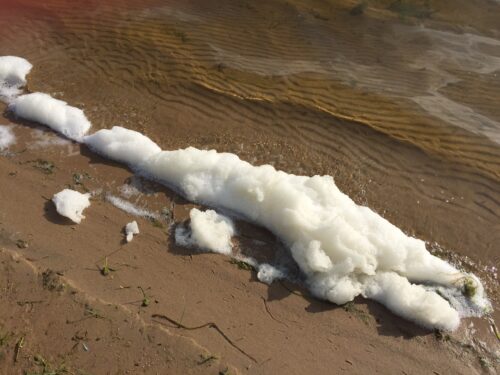Image courtesy of Flickr.
In 2018, Robert Bilott filed a lawsuit against three major chemical companies, 3M, DuPont, and Chemours, on behalf of every American exposed to per- and poly-fluoroalkyl substances (PFAS). PFAS are used in many water-resistant products ranging from waterproof jackets to non-stick pans. Since 1951, hundreds of thousands of tons of waste containing perfluorooctanoic acid (PFOA), a specific type of PFAS, have been dumped into the Ohio River and spread throughout the global biosphere. The ongoing litigation alleges that these companies have spread PFASs into the bloodstreams of ninety-nine percent of Americans while withholding information about their harmful side effects. Unfortunately, PFAS are resistant to degradation, and due to their long-lasting environmental presence, they are known as “forever chemicals.”
Traditional methods to break apart PFAS involve pressurized incineration at one thousand degrees Celsius. However, these techniques are costly and can spread the toxic compound into the atmosphere. A team at Northwestern University and UCLA recently discovered a new method to decompose PFAS. The researchers noticed an irregularity among the chain of tightly-bound atom clusters: a hydroxyl group, or a chemical group composed of oxygen bonded to a hydrogen atom. This group could be broken off when mixing PFAS with two common solvents: DMSO and sodium hydroxide. By targeting the weakest bond and sequentially disassembling the PFAS at only one hundred degrees Celsius, the study suggests it is possible to convert PFAS into environmentally harmless products efficiently. This technique has limitations since bulk quantities of DMSO are prohibitively expensive for widespread use. Still, this result suggests that pollution from PFAS may not truly be around “forever.”

